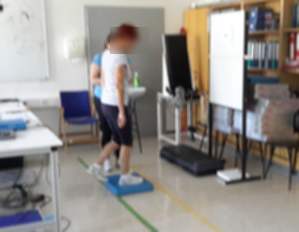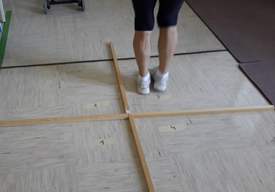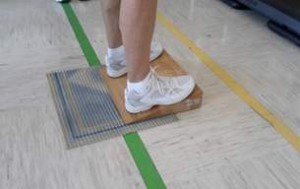Comparison of Berg Balance Scale and Mini-BESTest
The ability of movement in space allows people to maintain their social networks, personal contacts with their families and friends. Quality and quantity of movement also depend on the balance as the basic movement skill that enables the maintenance of upright posture and movement in space. This makes balance training programmes to be also the programmes for the maintenance and increase of mobility.
For a long time Berg Balance Scale was considered the gold standard in the assessment of balance in the elderly. However, the ceiling effect was noticed, and a more sensitive balance assessment scale had to be provided for the group with a very good mobility. Theoretical starting points show the adequacy of the Mini-BESTest scale (Franchignoni et al. 2010).
In looking for the most adequate scale the balance was assessed by two scales: Berg Balance Scale (Berg et al., 1989, 1992; Rugelj and Palma 2014) and Mini BESTest (Franchignoni et al., 2010). Fourteen functional activities are assessed by each scale (see Table). An important theoretical difference between the scales lies in their assessment of different dimensions of balance.
| Berg balance scale | Mini-BESTest |
| Standing up | Sit to stand |
| Unsupported standing | Rise to toes |
| Unsupported sitting | One leg stance |
| Sitting down | Foreword recovery |
| Sit from chair to chair | Backward recovery |
| Standing eyes closed | Lateral recovery |
| Standing with feet together | Stance – eyes open |
| Reaching forward | Stance – eyes closed foam |
| Retrieving object from the floor | Stance – incline surface eyes closed |
| Look backwards | Change gate speed |
| Turning for 360 deg | Turn head during gate |
| Stepping | Gate with pivot turn |
| Tandem stance | Obstacle crossing |
| One leg stance | Timed up and go – cognitive |
Berg K., Wood-Dauphine S., Williams J.I., Maki B. (1989). Measuring Balance In the Elderly: Preliminary Development of an Instrument. Physiotherapy Canada 41:304-11.
Berg K., Wood-Dauphinee S., Williams J.I., Maki B. (1992). Measuring Balance in the Elderly: Validation of an Instrument. Can J Pub Health 83 Supl. 2: S71.
Franchignoni, F., Horak, F., Godi, M., Nardone, A., & Giordano, A. (2010). Using Psychometric Techniques to Improve the Balance Evaluation Systems Test: The Mini-Bestest. Journal of Rehabilitation Medicine, 42(4), 323–331. http://doi.org/10.2340/16501977-0537








